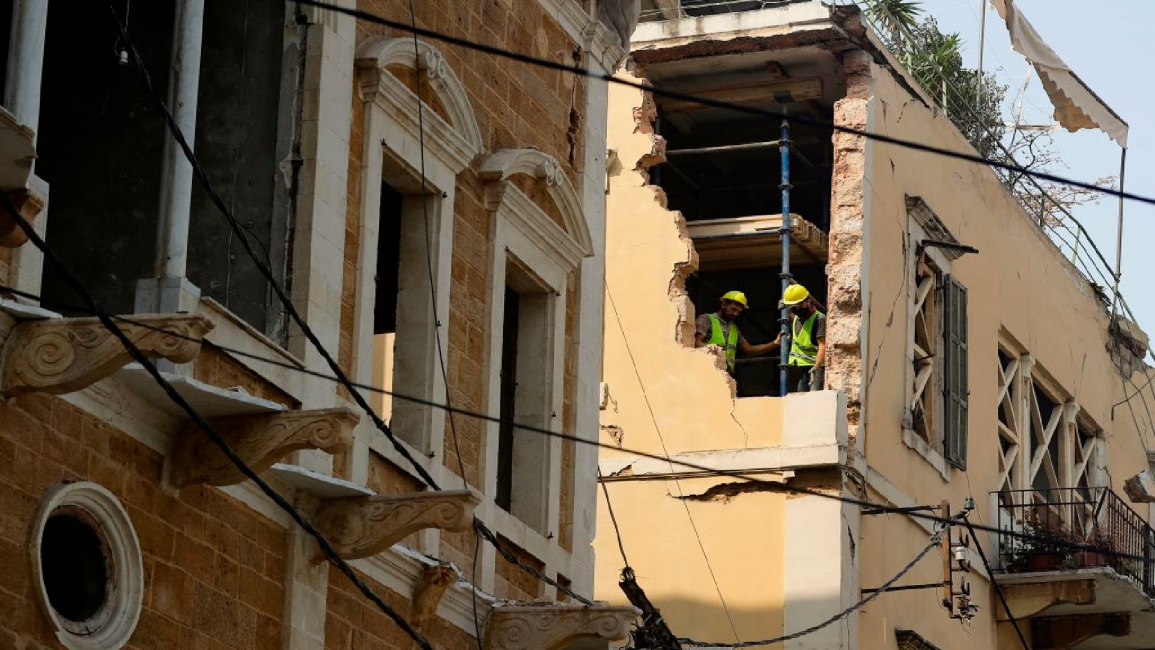Life slowly returning to Beirut neighbourhoods a year after port blast
Neighbourhoods are slowly coming back to life in Beirut as reconstruction efforts continue, one year after a huge explosion at the city's port left swathes of the capital destroyed or heavily damaged.
While most of the port lies in ruins a year on from the 4 August 2020 blast, many Beirut streets have already been cleared of debris as local NGOs take on the government's work on reconstruction.
Karantina, which lies just east of the port and was one of the most heavily affected regions, has seen much progress in this regard thanks to the thousands of volunteers at Offre Joie, the NGO which has overseen clear-up work in the area.
Residential buildings appear brighter and more colourful than they once were, the main fire station is in a better state, and other buildings are being restored.
The east of the city was hit hardest by the explosion due to its proximity to the port, where thousands of tonnes of ammonium nitrate were improperly stored causing the blast.
The now-destroyed wheat silos shielded some of the blast’s pressure, preventing much of the shockwaves from continuing westwards, with the open area facing the sea.
Despite this, the blast - said to be the most powerful in the 21st century - still managed to cause huge damage in downtown Beirut and beyond.
It happens to be that much of Beirut's remaining heritage buildings are located in the east, in districts such as Gemmayzeh, Rmeil, Mar Mikhayel, and Ashrafiyeh.
Around 300 buildings in east Beirut were damaged in the blast, and reconstruction efforts here have been relatively slow due to a lack of funds.
Although some of these buildings and mansions - which date back to the Ottoman era and French mandate - could not be saved, most have. Beirut Heritage Initiative and other organisations have taken on the task of trying to save these historic structures from destruction.
According to a report published on their social media pages, their teams have managed to renovate 150 heritage units that saw minor damage in a space of eight months.
Five hospitals completely put out of service during this period are now up and running, thanks to work and funding from Lebanese expatriates, NGOs, and others.
The hospitals - including some of the country’s largest and most prestigious - struggled to treat the thousands of wounded civilians that poured in after the blast. Due to the numbers, the injured were treated on the pavements outside, hospital floors, desks, or in their cars, by overwhelmed medics.
Stories of miraculous getaways made international headlines, as nurses saved newborns while mothers gave birth under phone lights as the power was knocked out.
While some floors in these hospitals remain under construction or closed off to patients, most of the facilities are operating normally again.
As for overall damages in the city, around 50 percent of residential units have been fixed, the head of the Lebanese contractors' syndicate told local media on Monday. Doors, windows, lighting, and other important infrastructure have been restored, which has allowed residents to gradually come back home.
Most of the larger buildings directly facing the port to the south along Charles Helou Avenue remain in the same condition, many waiting for the insurance money that can only be given once the cause of the blast is confirmed.
Legal proceedings have been hampered by political factions who have refused to attend hearings and cooperate with the investigative judge. The families of victims have repeatedly warned politicians against creating hurdles, threatening to take matters into their own hands if they continue to stand in the way of justice.
Over 200 people died and over 6,000 were wounded when ammonium nitrate unsafely stored at the port for around six years blew up, after allegedly catching fire. The causes of the initial fire are still being investigated, but authorities have been accused of gross negligence.



